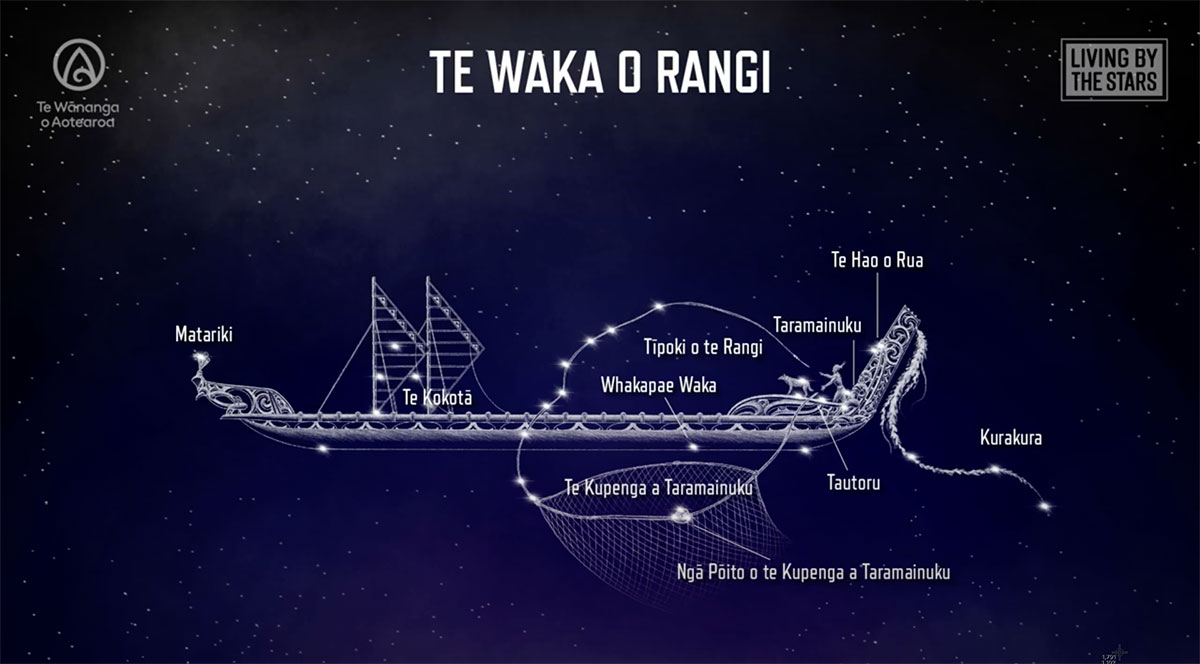The setting of Matariki
The Setting of Matariki
Join Dr Rangi Matamua as he shares with us knowledge around the setting of Matariki.
Join Dr Rangi Matamua as he shares with us knowledge around the setting of Matariki.
As the end of the Māori year approaches, the Matariki star cluster will begin to set with the sun in the western sky. At this time Matariki isn’t visible. This occurs around the Tangaroa-ā-mua lunar phase. This period lasts for one lunar cycle, about a month, until Matariki rises once again on the next Tangaroa-ā-mua lunar phase.
While Matariki is primarily associated with life, it also has a strong connection with death. The star Pōhutukawa in particular is associated with those who have passed away. Once tohunga kōkōrangi have ascertained the Matariki signs for the year ahead, the community will gather together to mourn the dead. Te Tirohanga (the viewing), Te Whakamahara i ngā mate (remembering the dead), and Te Whāngai i ngā whētu (feeding the stars) take place at this time.
The constellation known as “Te Waka o Rangi” is connected to the setting of Matariki.
Known by a variety of names based on regional kōrero, Te Waka o Rangi is a canoe with Matariki at the front and Tautoru, or Orion’s Belt, at the back. The waka is captained by a star named Taramainuku, who casts his net, Te Kupenga a Taramainuku, each evening upon the Earth and hauls up the souls of those who have died that day.
The spirits of the deceased are placed on his waka until Haratua (the Tangaroa moon when the year ends), when Matariki sets and Te Waka o Rangi is vertical in the western sky and setting with the sun. As Matariki sets, Taramainuku is taking our loved ones onwards to their journey into the heavens of Rarohenga.

The setting of Matariki is a time for mindfulness and reflection. It’s a time to appreciate our loved ones and spend time together to share ideas and wānanga/learn together. It’s a time to get creative with artistic pursuits and do indoor activities.
Matariki occurs during the winter season when all of the crop harvests are long complete. The pātaka (pantry/larder/food store) and the woodshed are full from the warmer months. It’s a time for winding down and keeping warm by the fire.